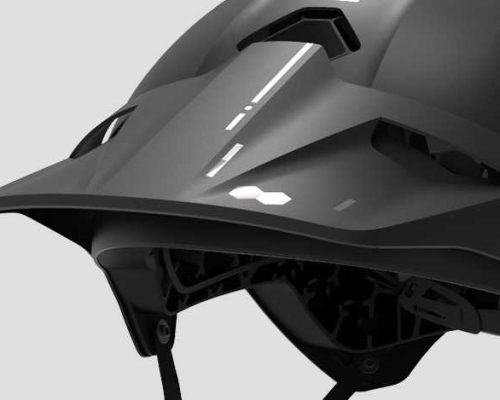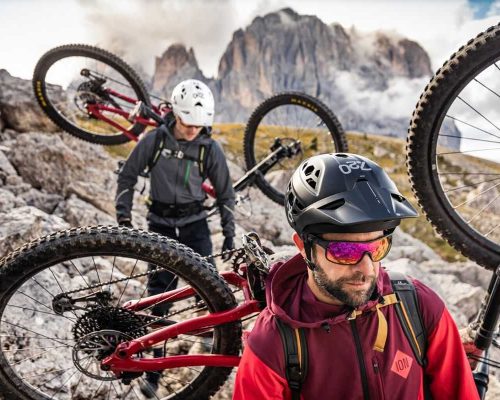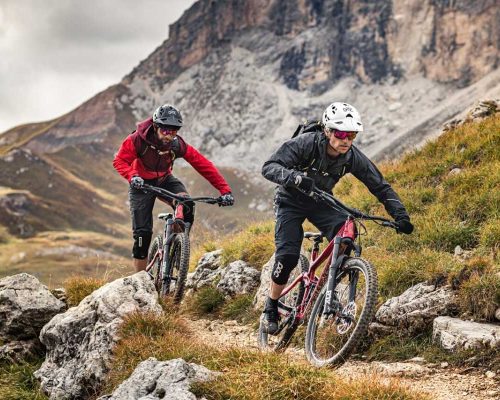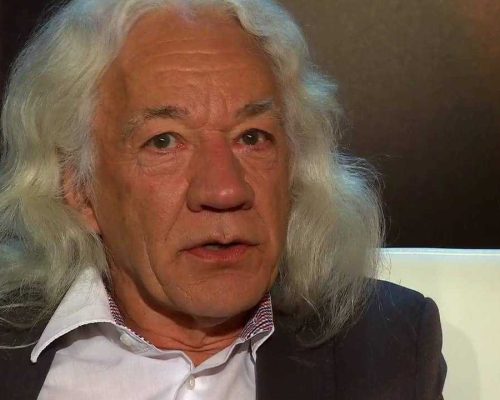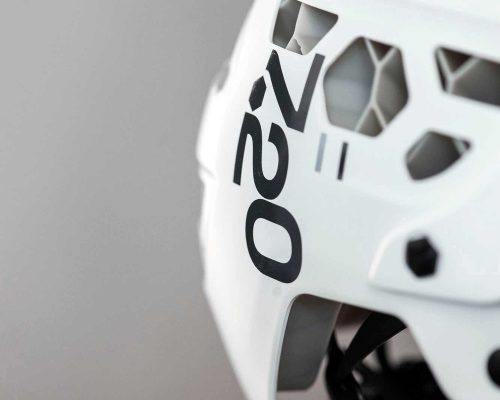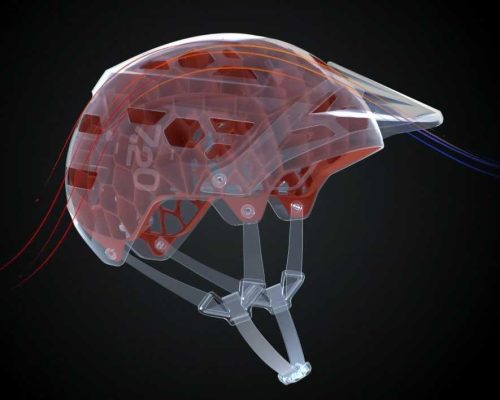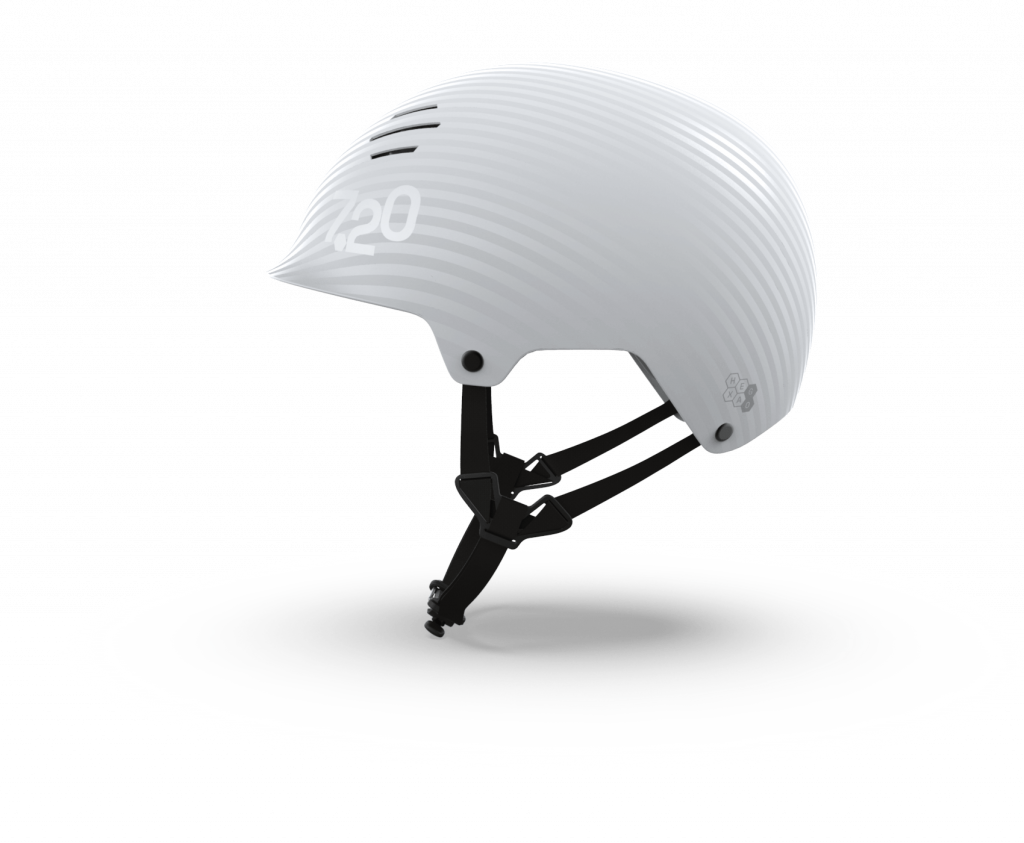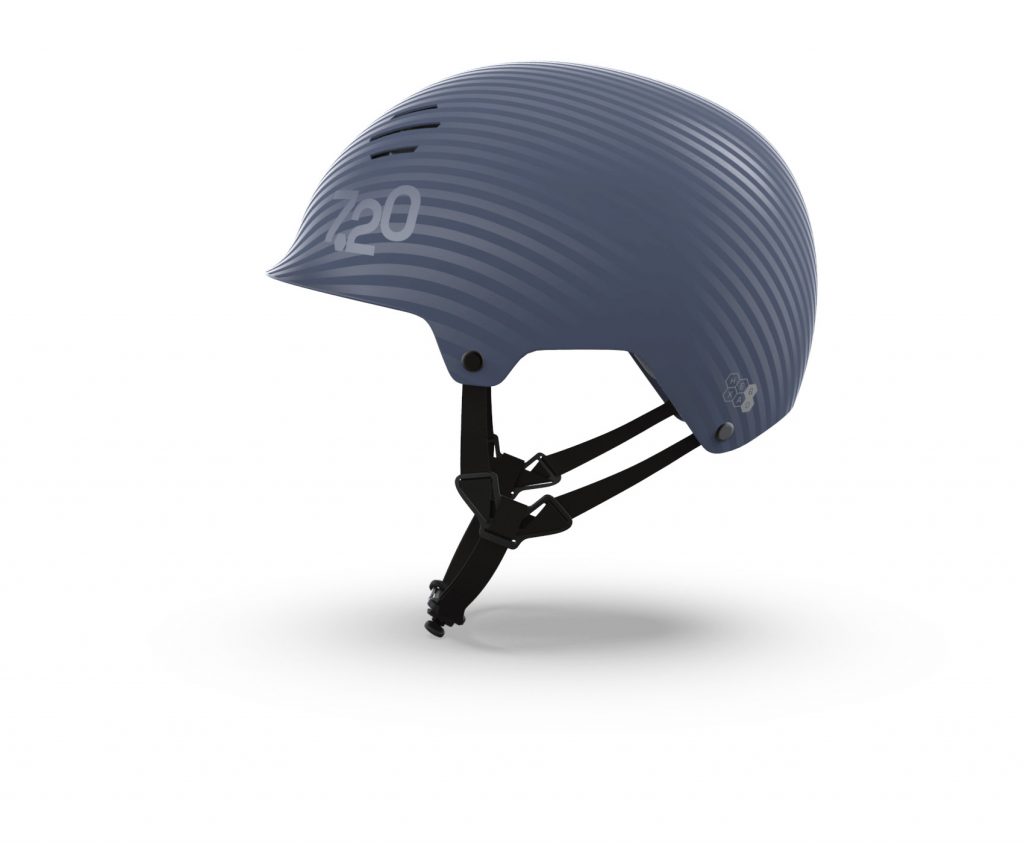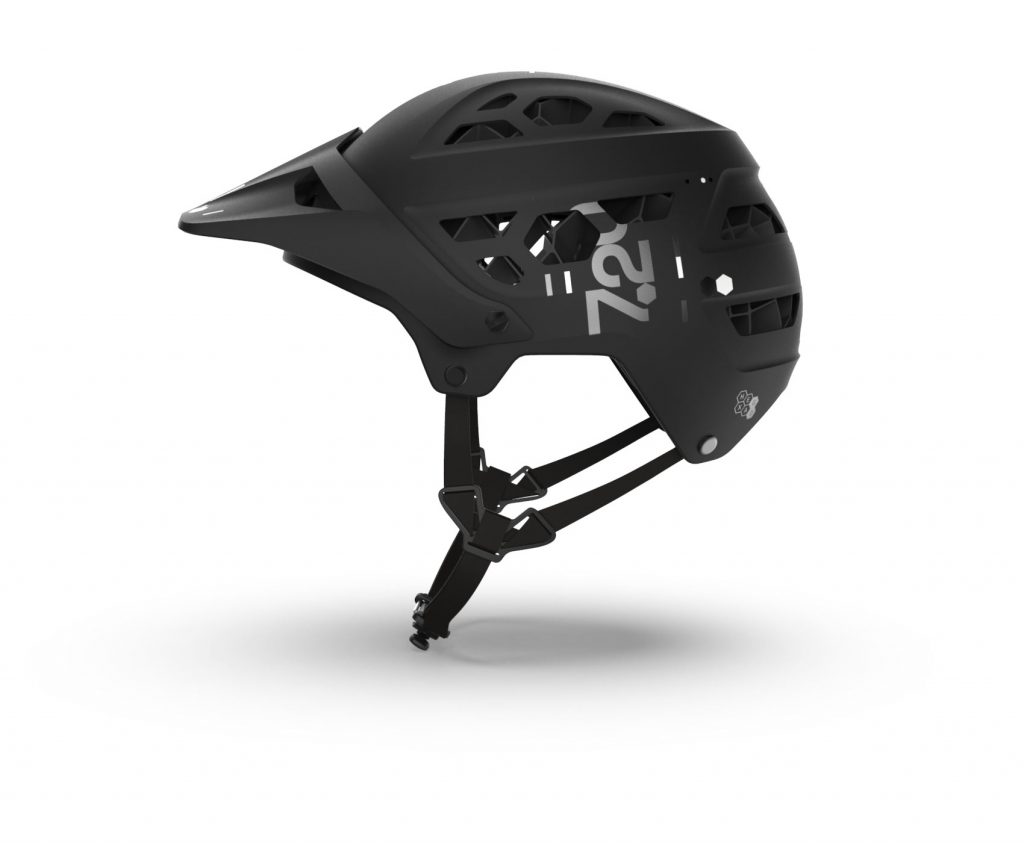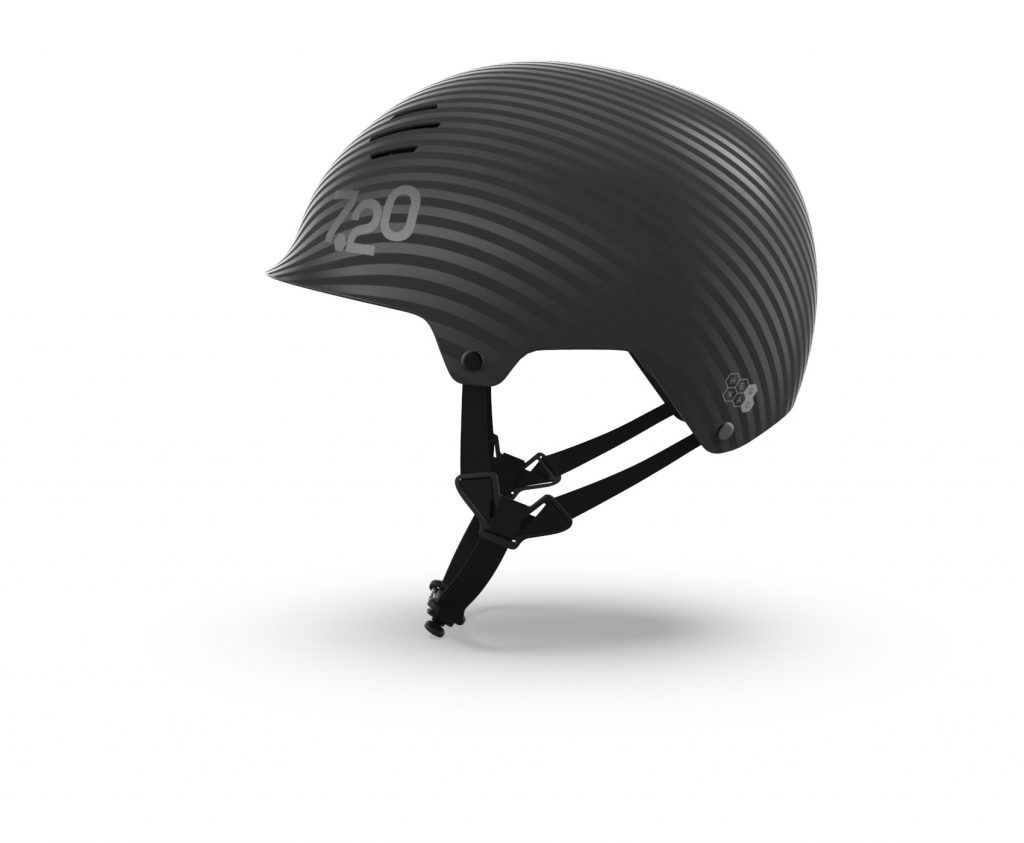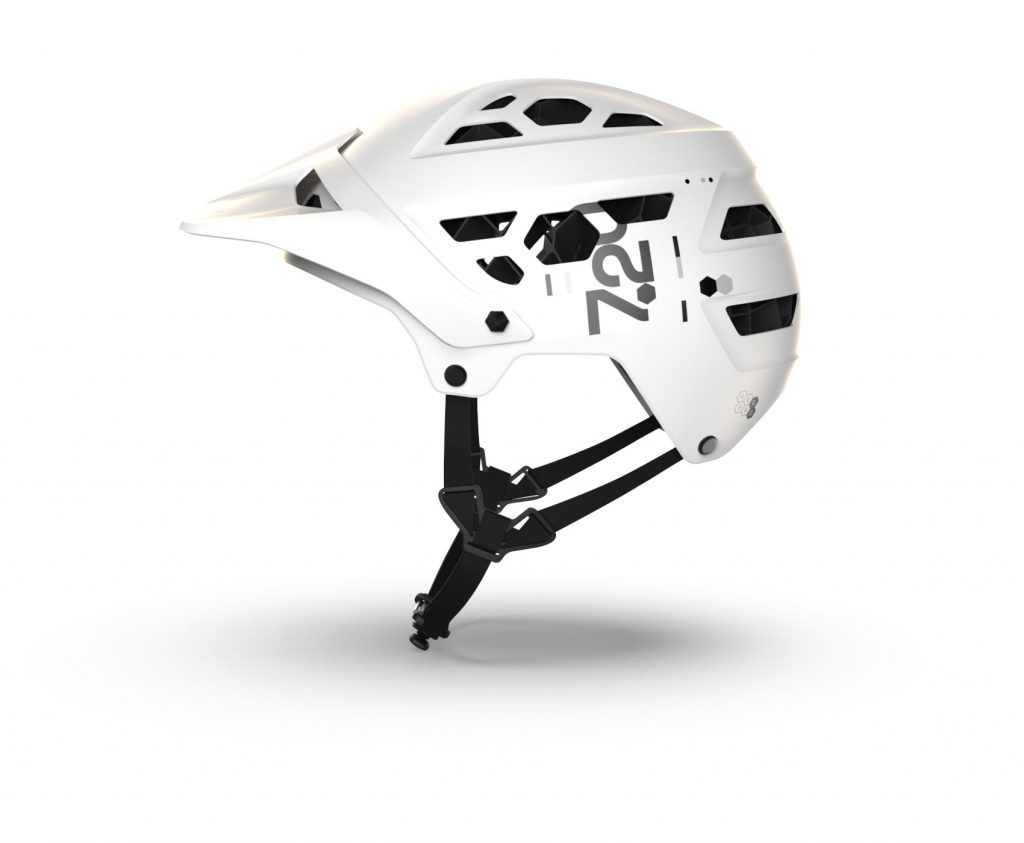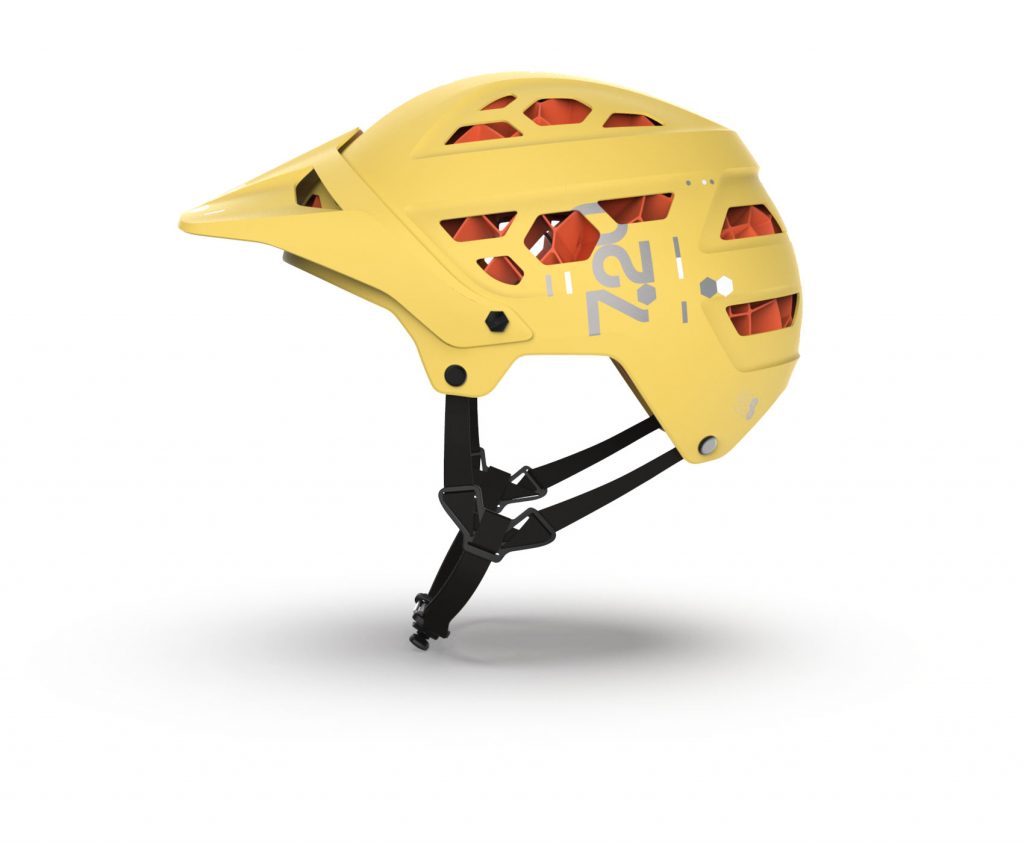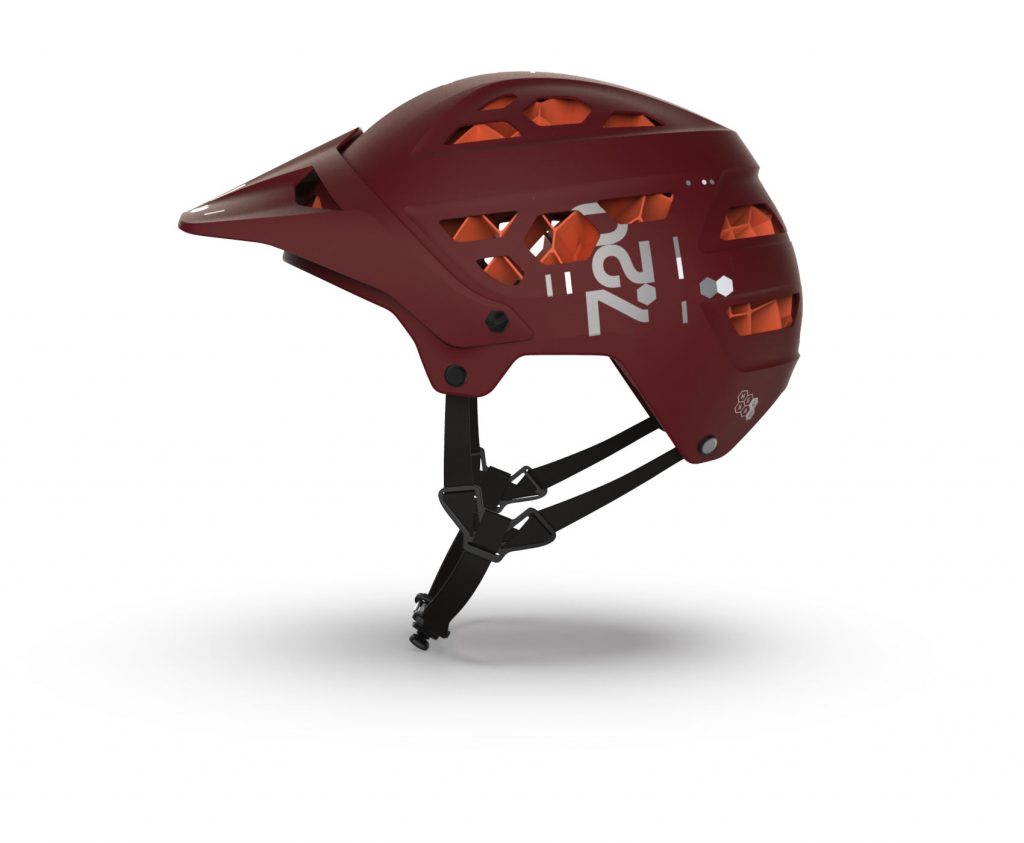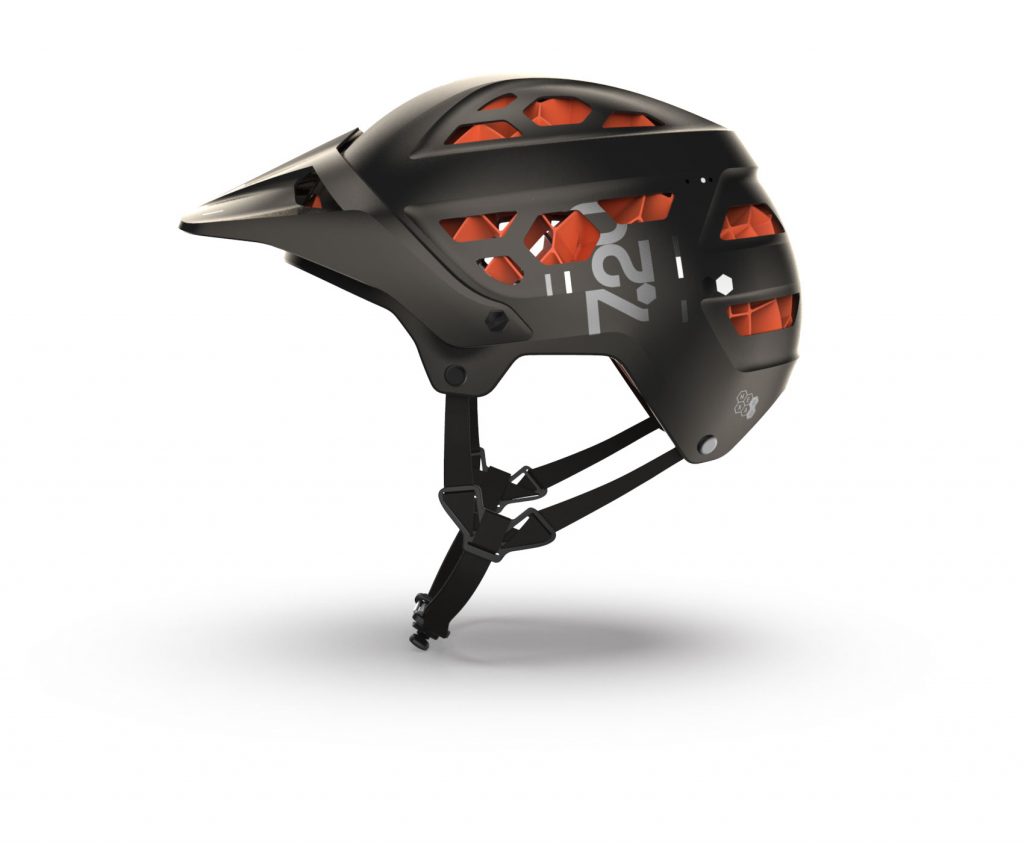Patrick Pedevilla and Werner Ebner talk about SEVENTWENTY and their safety (r)evolution
A dedicated spirit of research, plenty of technical know-how, a large dose of passion – and a pinch of good luck: with these ingredients Patrick Pedevilla developed a revolutionary honeycomb structure which, forming the core of a helmet, protects the head much better than conventional helmets from injuries caused by falls and bumps. With his company SEVENTWENTY Patrick now produces his own bike and ski helmets and markets the innovative HexaGo technology used in the helmets. In the following interview he and marketing manager Werner Ebner talk about how HexaGo technology was developed, what drives them and where SEVENTWENTY will go next:
How it all began: with a vision, innovative spirit – and a dad’s search for a safe helmet
You have developed a helmet that sets completely new standards in terms of shock absorption and therefore of safety. What makes your helmet so special?
Patrick: “We didn’t actually develop a helmet, but rather rethought the helmet core that absorbs the shock. This core element can basically be used in all possible types of helmet where its purpose is shock absorption. The major innovation is in fact in the helmet “skeleton”, as we call the internal hexagonal honeycomb structure, which consists of a special elastomer mixture and can absorb shocks much better than conventional polystyrene cores. This means that our helmets can offer a much greater level of safety – which is after all what it’s all about.”
How did this idea come about?
Patrick: “For many years my family has been running a company that produces accessories such as hats, gloves and scarves. When it became increasingly popular to wear a helmet instead of a hat on the slopes, we repositioned our range away from the sports to the fashion sector. That was also around the time my daughters first discovered cycling and scooters. So I started reading up about bicycle helmets for children on the internet and looking for experience and test reports. As you do… (laughs) The main subject, i.e. safety, was hardly addressed. I very soon stumbled upon the fact that neither bike nor ski helmets had changed as regards safety for some time. Polystyrene, which is hard by nature, was still in widespread use. That somehow irritated me and I spontaneously decided to look into it more.”
Are you more generally an innovator or a DIY type?
Patrick: (laughs) “Yes and no. as a child I was always curious and a hobbyist, yes. I always found technical devices fascinating and in my room there was never anything in just one piece, because I would take everything apart to see how it worked. I like to find alternatives, solutions, different ways of making things better. And in this case I had two separate motivations: the hunt for a safe helmet for my kids, and the development of a new line of business.”
Of failed ideas, surprising crash tests and a superlative TV appearance

How did you proceed?
Patrick: “At first the idea was to make a helmet with a kind of air chamber system inside, but it soon became clear that this concept was not financially viable. About five years ago, by chance two students from the design faculty in Venice contacted me with their idea for a sort of foldable helmet that required financial support for its development. At the same time an architect friend was researching lightweight designs with honeycomb systems, and he mentioned their exceptional stability. It all clicked and I thought that a honeycomb structure might be just the right thing for a helmet: stable and at the same time flexible.”
Werner: “We gave up on the aspect of foldability in the course of development because from the outset our main focus was on the honeycomb structure with its greater shock absorption.”
Patrick: “The very first prototype more than confirmed this decision. After preparing the technical structure we made a 3D print: the result seemed very good and stable even though it was made of rubber. We therefore decided to send the helmet to a special laboratory in Milan for crash tests. The technician called me after a few days and was thrilled – the results were very good and the helmet was still intact even after its eleventh fall from the test tower.”
Werner: “You have to realise that the styrofoam core in a conventional helmet will crack after a serious fall – it absorbs the energy of the impact. This makes the helmet unusable and fit only for the bin.”
What happened after this first positive feedback?
Patrick: “After the first promising results we wanted to make the structure lighter and we also had to improve it aesthetically – nobody wants an ugly helmet on their head! (Laughs) We still hadn’t really understood how the structure could optimally function – this had to be investigated with numerous iterations and tests, with all the associated successes and failures. That took a lot of time, especially since initially I was doing everything on the side and financing it all out of my own pocket.”
So a research project like this is very expensive?
Patrick: “Yes, it is. There came a point when I couldn’t go it alone anymore. So we started looking for an investor who could not only support us financially but also had the right know-how and contacts. We were then able to present our product on the investor show “2 Minuten, 2 Millionen” – the Austrian version of “Dragon’s Den”. It was a pretty tough experience and I had to face a lot of criticism. For example, I was told that the development was not yet ready and there was a lot of negative feedback. So I was relieved when Hans Peter Haselsteiner came along with his offer. After the show he said to me: “Patrick, that has to be either my best or my worst investment!” (Laughs)
Werner: “…well, at any rate the €500,000 was the largest amount ever invested on the show!”
Made in Italy and … ready for the future!

Where do you produce your helmets?
Patrick: “It was not so easy to find a manufacturer to do the injection moulding for our helmets. We finally found a manufacturer near Vicenza who also produces items for the automotive industry and who had the necessary experience. And our project was a real challenge even for him – he said of all his tools, our helmet mould was like the space shuttle!” (Laughs)
Was it a conscious decision to produce in Italy?
Patrick: “Yes, of course. As a company we are committed to the most sustainable production methods – for example we only use cardboard in our packaging, not plastic. The product itself is very durable, but we are also in the process of developing a recycling concept for the helmets. Apart from that, proximity to the production site has another clear advantage: our technology is relatively… “supervisor-intensive”, it requires us to be close to the process. We are actually on site almost every week.”
Werner: “It was also important from the very beginning for us to find partners who themselves had a degree of commitment to the project and would take an active part in shaping the technology and the manufacturing process – which we succeeded in doing both for the production of the inner structure and the shell.”
What are the next steps? Can people buy your helmets yet?
Werner: “You can pre-order them, yes. We have started pre-sales on our website and you can reserve a helmet for a special price with a small down-payment – in other words as part of a crowdfunding.”
Patrick: “We are just finalising the last stages before starting industrial production. We want to deliver the first mountain bike helmets from May, with city helmets due in the summer. Then comes production of the SEVENTWENTY ski helmet, which will appear on the market next winter.”
Werner: “SEVENTWENTY only produces bike and ski helmets with HexaGo technology. But, because the core is in principle very versatile, we have deliberately chosen a two-pronged approach and decoupled the technology of the core – which is marketed under the HexaGo label – from SEVENTWENTY helmets. We will thus make the HexaGo technology available to other companies under licence agreements so it can be used in other helmets.”
And where do you see yourself in five years?
Werner: “In five years we want to have established our market position. Probably – hopefully! – we will be sitting in our offices with our brains whirring and working flat out!” (Laughs)
Patrick: “Everything is coming along very, very well at the moment. The feedback we get is consistently positive, both from our “end customers”, i.e. the ones wearing the helmets, and from the industry. There is clearly a need for innovation here – and our development is clearly not entirely on the wrong track.”



